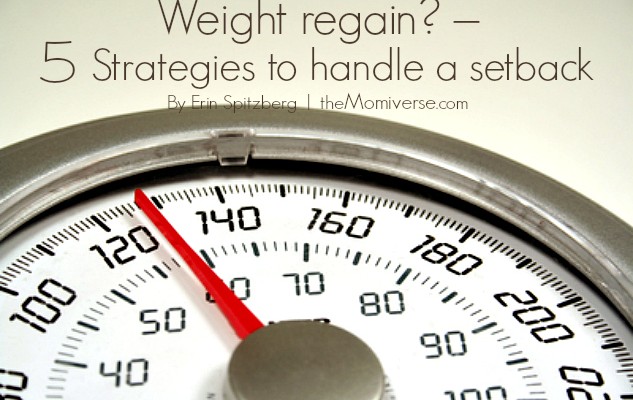
If you’ve lost weight and gained it back, you’re one of the 95% of people who struggle with weight maintenance. Losing weight, although a challenge, is easy compared to weight maintenance. It’s been proven so often, this statistic has become fact.
What was your trigger for regaining the weight? Was there an injury so exercising became more of a challenge? Did life get so busy you began eating out more and planning less? Did stress allow emotions to take over? Whatever the reason, take comfort in knowing that setbacks are normal and to be expected. Here are five strategies to help you navigate your way around a setback:
1. Eat every three to four hours
Although setbacks are normal, some can be prevented by eating every three to four hours. This helps prevent low blood sugar. Making a rational food choice when your blood sugar is plummeting is nearly impossible. No matter your intentions, no reasonable amount of food will satiate you. You will continue to eat until your blood sugar is restored. Then you might give yourself permission to binge. Why? Because the day is already ruined. This cycle of events can set the stage for setbacks and weight regain. Snacking on nuts, veggies and hummus, or cheese and fruit are some easy solutions to preventing setbacks.
2. Avoid fad diets
Fad diets are weight loss plans or aids that promise dramatic results. They are notorious for quick weight loss followed by even quicker weight gain. They usually include limiting calories and/or avoiding large food groups. There will always be some form of a setback because the diet is not a realistic way of eating. It puts you at risk for weight regain. Think rationally before starting a fad diet. Ask yourself whether the changes you are making are sustainable in the long term. Can you see yourself eating like this in one year, five years, or even ten years?
3. Be mindful
Being mindful in terms of food is paying attention and being aware. Weight gain starts when we become less aware of what we are eating, how much we are eating, and the choices we are making. When you are mindful you have the flexibility to eat out of choice rather than restrict. Feeling you need to restrict yourself from eating certain foods is a diet mentality. It is not sustainable. Eating out of choice is a lifestyle. Break free from the “I can’t” mentality and start thinking, “I’m making the choice to…”
4. Plan
Planning can be overwhelming when your days are filled with responsibilities. Without planning you will experience setbacks. Having a plan in place will help minimize them. Planning can refer to meal planning, shopping, cooking, prepping, and exercise. Forget about what is recommended for the general population and meet yourself where you are now. Consider online shopping to have groceries delivered to your door. Buy time-saving foods like frozen veggies, fruits (apples and pears), or 100 calorie bags of almonds. Purchase a slow-cooker and create one-pot meals like soup and chili recipes to freeze. Small steps now will save time and setbacks later.
5. Sleep
Getting eighteen hours of sleep like we did as teens is in the past, but getting enough sleep to prevent setbacks is important. Seven to eight hours of sleep is essential. This amount of sleep is needed to keep the hunger hormones ghrelin and leptin in check. These hunger hormones regulate our appetite and satiation level. Without adequate sleep, they won’t work effectively, causing us to eat more. If you struggle with getting adequate sleep, try going to bed and waking up around the same time each day, sleeping in a dark, cool room, and avoid using a phone, tablet, or computer right before bed.
Enjoy long-term sustainable weight loss by mastering these five strategies. Setbacks will happen, but you can learn to prevent or recover, rather than regain that weight.
This Week's Articles Read, learn, live
-
 Summertime grilled vegetables
Summertime grilled vegetables
-
 5 Ways to make this summer full of unforgettable family fun
5 Ways to make this summer full of unforgettable family fun
-
 10 Reasons to take a family vacation in Puerto Vallarta
10 Reasons to take a family vacation in Puerto Vallarta
-
 5 Fun tips for spring cleaning with kids
5 Fun tips for spring cleaning with kids
-
 10 chick flicks with New Year’s Eve scenes
10 chick flicks with New Year’s Eve scenes
-
 The day after Christmas: 5 ways to handle the biggest downer of the year
The day after Christmas: 5 ways to handle the biggest downer of the year